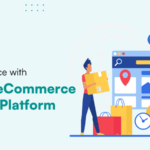Introduction
In the ever-changing world of B2B businesses, technology plays a major part in improving overall operations, cutting expenses, and increasing efficiency. One innovative business strategy that has disrupted traditional industries is the on-demand service app, which functions similarly to Uber. In this extensive guide, we will examine the crucial procedures and factors while developing an Uber-like app tailored specifically for B2B enterprises in 2024.
1. Understanding the B2B Landscape
Before delving into the app development process, it’s crucial to understand the unique characteristics of B2B businesses. Unlike B2C models, B2B transactions involve complex negotiations, bulk orders, and intricate supply chains. Your Uber-like app needs to accommodate these nuances to deliver value to your B2B clients.
2. Market Research and Target Audience
Identifying your target audience is pivotal for success. Conduct thorough market research to understand the pain points, challenges, and needs of B2B enterprises in your chosen industry. Identify the key stakeholders, decision-makers, and end-users who will interact with your app. This knowledge will inform your app’s features and functionalities.
3. Define Key Features
Building an Uber-like app for B2B businesses involves creating a platform that streamlines processes and adds value to the entire supply chain. Key features to consider include:
a. User Roles: Define user roles such as buyers, suppliers, and administrators.
b. Catalog Management: Allow businesses to showcase their products or services with detailed descriptions.
c. Ordering and Invoicing: Implement a seamless ordering system with integrated invoicing and payment options.
d. Real-Time Tracking: Provide real-time tracking for orders, shipments, and deliveries.
e. User Authentication: Prioritize secure user authentication to protect sensitive B2B data.
f. Communication Channels: Integrate chat or messaging features to facilitate communication between buyers and suppliers.
4. Technology Stack
Selecting the right technology stack is critical for the success and scalability of your app. Consider factors such as platform compatibility, scalability, security, and ease of maintenance. Common technologies include:
a. Front-end: React Native, Flutter, or native development for iOS and Android.
b. Back-end: Node.js, Django, or Ruby on Rails for robust server-side development.
c. Database: Choose scalable databases like MongoDB, PostgreSQL, or MySQL.
d. Cloud Services: Leverage cloud services like AWS or Azure for seamless scalability.
e. Payment Gateways: Integrate secure payment gateways such as Stripe or Braintree.
5. User Experience (UX) and User Interface (UI) Design
Create an intuitive and user-friendly interface that aligns with the B2B user journey. Consider the unique needs of both buyers and suppliers, ensuring that the app enhances efficiency and simplifies complex processes. A well-designed UX/UI can significantly impact user adoption and satisfaction.
6. Security and Compliance
Security is paramount in B2B transactions, considering the sensitive nature of business data. Implement robust security measures, including data encryption, secure authentication protocols, and regular security audits. Ensure compliance with relevant industry regulations and data protection laws to build trust among users.
7. Integration with Existing Systems
B2B enterprises often rely on existing ERP, CRM, or other enterprise systems. Ensure seamless integration with these systems to avoid disruptions in their workflow. API integration and compatibility testing are crucial steps in this process.
8. Testing and Quality Assurance
Thorough testing is essential to identify and rectify bugs, security vulnerabilities, and performance issues. Conduct user acceptance testing (UAT) with real B2B clients to gather feedback and make necessary improvements. Continuous testing throughout the development lifecycle ensures a robust and reliable app.
9. Deployment and Launch
Coordinate a smooth deployment process, considering factors such as server capacity, load balancing, and database optimization. Plan a strategic launch, including marketing and promotional activities to generate awareness among your target audience.
10. Post-launch support and Iteration
The launch of your Uber Clone App is just the beginning. Provide ongoing support to address any issues and gather user feedback for future iterations. Regularly update the app to introduce new features, improve performance, and stay ahead of industry trends.
11. Data Analytics and Business Intelligence
Integrate analytics tools into your B2B Uber-like app to gather valuable insights into user behavior, transaction patterns, and overall app performance. Utilize business intelligence to provide clients with data-driven recommendations, helping them optimize their procurement strategies and make informed decisions. This feature not only enhances the user experience but also positions your app as a valuable tool for business growth.
12. Customization and Scalability
Recognize that different B2B enterprises have unique requirements. Build a flexible and scalable architecture that allows for easy customization based on the specific needs of your clients. This adaptability ensures that your app can cater to a diverse range of industries and business models, enhancing its appeal and usability across various sectors.
13. Regulatory Compliance and Global Considerations
In the B2B landscape, businesses often operate on a global scale. Ensure your app complies with international regulations and standards, taking into account different tax laws, import/export regulations, and industry-specific compliance requirements. This global approach positions your app as a reliable solution for businesses operating in diverse markets.
14. Multi-Language and Multi-Currency Support
Facilitate international transactions by incorporating multi-language and multi-currency support. This feature is particularly important for B2B enterprises engaged in cross-border trade. Providing a seamless experience for users regardless of their location enhances the app’s global appeal and broadens its market reach.
15. AI and Machine Learning Integration
Leverage AI and machine learning algorithms to enhance the functionality of your B2B app. Implement intelligent features such as predictive analytics for demand forecasting, dynamic pricing models, and personalized recommendations. These advanced technologies can significantly improve the efficiency and effectiveness of B2B transactions within your app.
16. Sustainability and Green Initiatives
Incorporate sustainability features into your app to align with the growing focus on environmentally friendly business practices. Provide options for users to track and reduce their carbon footprint through optimized supply chain routes, eco-friendly packaging choices, and other sustainability measures. This not only meets the demands of socially responsible businesses but also contributes to a positive brand image.
17. Community and Networking Features
Foster a sense of community within your B2B app by incorporating networking features. Allow businesses to connect, share experiences, and collaborate within the platform. Networking capabilities can transform your app into more than just a transactional tool, positioning it as a hub for industry collaboration and knowledge-sharing.
18. Feedback Mechanisms and Customer Support
Implement robust feedback mechanisms to gather insights from users and continuously improve the app. Additionally, provide responsive customer support channels to address queries, concerns, and issues promptly. A strong feedback loop and excellent customer support contribute to user satisfaction and loyalty.
Conclusion
In the dynamic nature of B2B businesses, building an Uber-like app for 2024 requires a comprehensive strategy. From user-centric design and cutting-edge features to global concerns and environmental initiatives, our in-depth manual highlights the need for flexibility, scalability, and a deep comprehension of market dynamics. By integrating features like networking capabilities, personalization, and data analytics. your app can not only streamline transactions but also catalyze positive change within industries, establishing new benchmarks for efficiency and innovation. In the coming years, maintain your flexibility, adopt new technology, and market your app as a cutting-edge B2B corporate solution.



